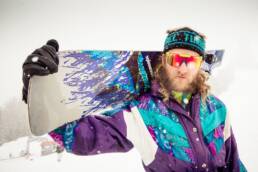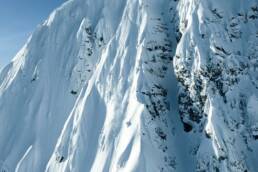From KMC’s latest SkinTrack column, editor-in-chief Mitchell Scott reflects on the nature of wickedness as it relates to good versus evil.
If something is wicked, it’s bad. Morally, very bad. Evil even. It is fierce and vicious. Marked by mischief, disgustingly unpleasant, and wholly vile. It can cause harm, distress, or trouble: a ferocious storm, a tenacious fever, wild waves, a deadly avalanche. The teenager’s ski boots have a wicked odour.
The word’s one constant, however, is that it pushes limits to the extreme and, in the end, can inspire exceptional quality.
Because of this, wicked goes beyond reasonable or predictable limits. It is of exceptional quality or degree. She’s a wicked skier. Which, of course, is good to most of us. Morally and visually and internally very good. It is fierce and vicious, the aggressiveness of her skiing. Not mischievous or evil or gross. Definitely not vile. If her skiing goes wrong, however, because it is so wicked, it could cause her harm, distress, or great amounts of trouble. She could crash and burn, tumble into oblivion. That self-inspired duality is the word’s essence, the inextricable connection between polar opposites.
The word’s one constant, however, is that it pushes limits to the extreme and, in the end, can inspire exceptional quality. Bad, good, or perhaps in the case of the wicked stories you’re about to read in this magazine, something in between. Enjoy issue #34.
Mitchell Scott is the editor-in-chief of Kootenay Mountain Culture and Coast Mountain Culture magazines. Photo by Ryan Flett.
Related Stories
Backyard Booty Cometh…Again
It was another glorious evening of multimedia marvelousness. The 6th Annual Backyard Booty at Nelson's Capitol Theatre.…
Goat Style Bike Jam Goes This Weekend
Based in sunny Creston, BC, the Kootenays very own slopestyle competition goes this weekend, attracting some of the…
8th Annual Backyard Booty Goes Off
Kootenay Mountain Culture's annual winter bash went off in fine style at Nelson's Capitol Theatre this past Friday…
Dave Treadway Goes Big in the Selkirks
Some like to say that the mountains in and around Nelson, BC aren't that big. The Coast, Revelstoke, the Rockies,…
Patagonia Goes Fair Trade
This is big news. Patagonia Inc., the outdoor apparel company and CMC partner, is proud to announce its plans to offer…
Patagonia Goes Fair Trade
This is big news. Patagonia Inc., the outdoor apparel company and CMC partner, is proud to announce its plans to offer…






